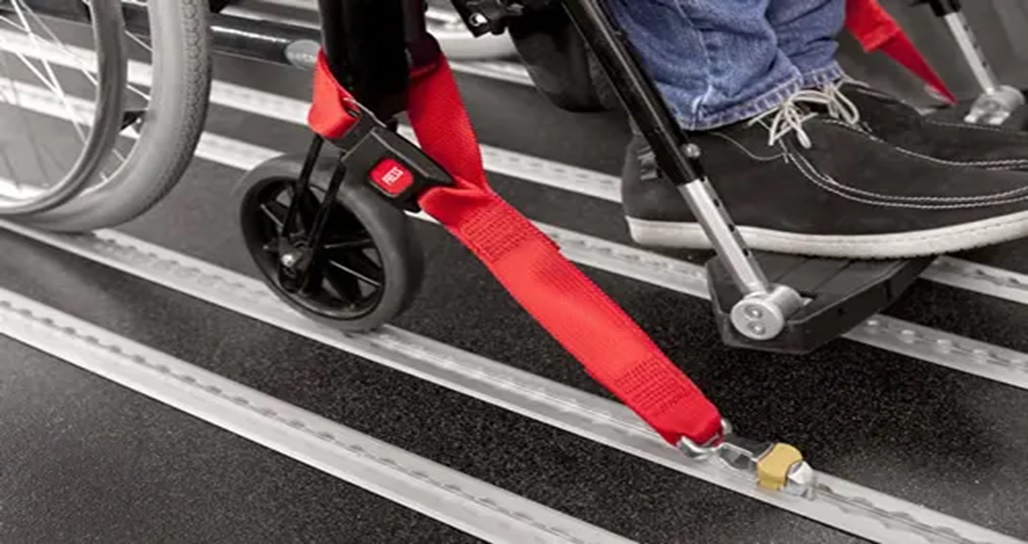In the realm of accessibility and mobility, wheelchair restraints play a crucial role in ensuring the safety and security of wheelchair users during transportation. Whether in a vehicle, on public transit, or within specialized mobility vehicles, proper wheelchair restraints are essential for preventing accidents and providing peace of mind to both users and caregivers.
Understanding Wheelchair Restraints
Wheelchair restraints, often referred to as wheelchair tie-down systems (WTORS) or wheelchair securement systems, are designed to firmly secure wheelchairs and their occupants in place. These systems typically consist of various components, including:
- Anchor Points: These are fixed points within a vehicle or transport platform where the restraints are attached. Anchor points are strategically located to provide optimal stability and safety.
- Retractable Straps: High-strength straps with retractors that allow for easy adjustment and tensioning. These straps are pivotal in securing the wheelchair frame to the anchor points securely.
- Occupant Restraints: Seat belts or harness systems designed to secure the wheelchair user within their chair, ensuring they remain stable and protected during transit.
Types of Wheelchair Restraints
Manual Wheelchair Restraints
- Hook and Strap Systems: Utilize hooks and straps that are manually tightened to secure the wheelchair.
- Clamp Systems: Utilize clamps that attach to the wheelchair frame and anchor points, providing a secure connection.
Powered Wheelchair Restraints
- Automated Retractors: Powered systems that automatically retract and tension straps, making securing the wheelchair quicker and easier.
- Electronic Locking Systems: Advanced systems that electronically secure the wheelchair in place, often integrated with vehicle electronics for enhanced safety.
Importance of Proper Installation and Training
Ensuring the effectiveness of wheelchair restraints relies heavily on proper installation and usage. It is crucial for caregivers, transportation providers, and wheelchair users themselves to receive training on:
- Installation Procedures: Properly anchoring and securing wheelchair restraints according to manufacturer guidelines and industry standards.
- Safety Protocols: Understanding emergency release procedures and regular inspection requirements to maintain optimal performance.
- Usage Techniques: Properly securing both manual and powered wheelchairs, ensuring occupants are safely restrained throughout the journey.
Regulatory Standards and Compliance
The safety of wheelchair restraints is governed by various regulatory standards and guidelines, such as those set forth by:
- National Highway Traffic Safety Administration (NHTSA): Provides guidelines for the safe transportation of wheelchair users in motor vehicles, including wheelchair securement requirements.
- Americans with Disabilities Act (ADA): Ensures accessibility standards for public transportation, including requirements for wheelchair securement systems on buses and trains.
- International Organization for Standardization (ISO): Develops international standards for wheelchair and occupant securement systems to ensure global safety compliance.
Advancements in Wheelchair Restraint Technology
Advancements in technology have led to innovations in wheelchair restraint systems, enhancing both safety and user convenience. Some notable advancements include:
- Smart Integration: Systems that integrate with vehicle electronics to provide real-time feedback on wheelchair securement status.
- Enhanced Ergonomics: Improved designs that prioritize ease of use and comfort without compromising safety.
- Durability and Reliability: High-strength materials and advanced engineering techniques that ensure longevity and robust performance.
Conclusion
Wheelchair restraints are indispensable tools in ensuring the safety and security of wheelchair users during transportation. By adhering to proper installation procedures, following safety protocols, and staying informed about regulatory standards, caregivers and transportation providers can effectively safeguard the well-being of wheelchair occupants. As technology continues to evolve, so too will the capabilities of wheelchair restraint systems, promising even greater levels of safety and accessibility for individuals with mobility challenges.




